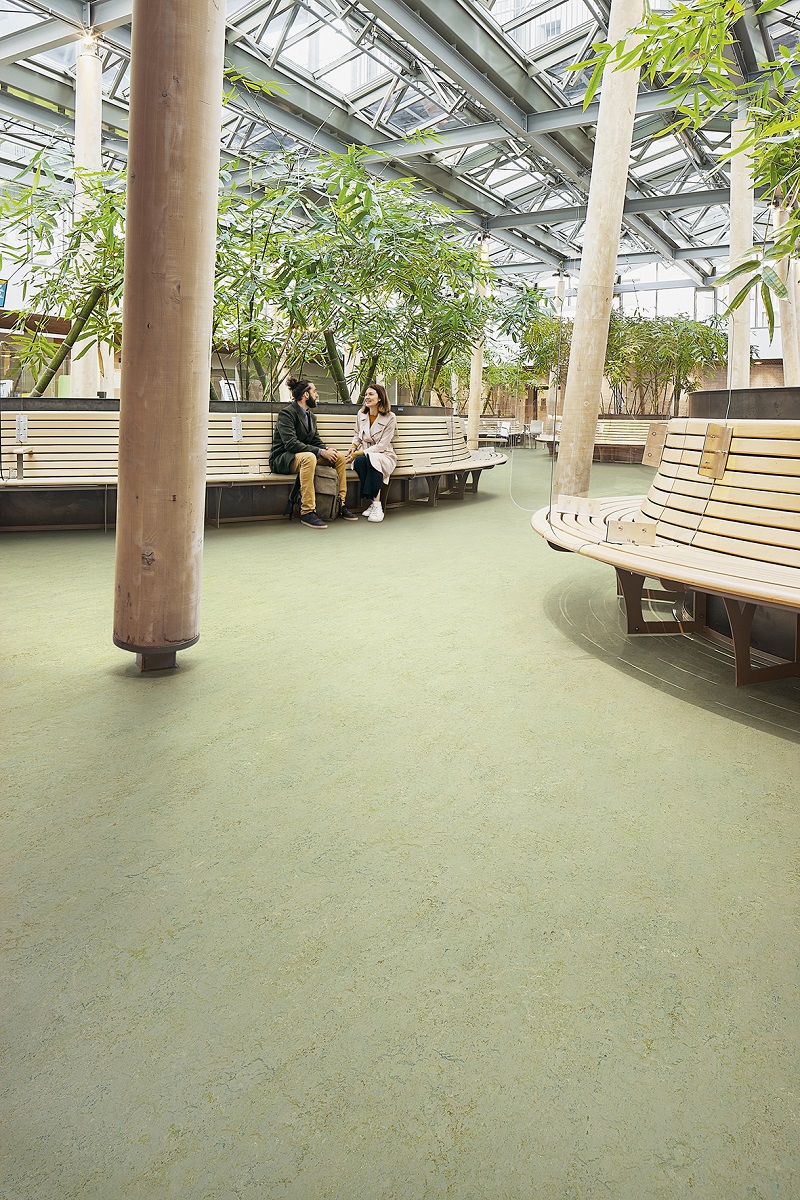When it comes to specifying floor coverings for healthcare settings, it is important to choose solutions that can contribute to the creation of a more-pleasant and contemporary interior design, while also being durable, hygienic and sustainable

It is well-documented that depression, stress, and anxiety can all have a detrimental effect on health and recovery.
With this in mind, specifiers within the healthcare industry are now paying more attention to the atmosphere created through design, opting for brighter and more-inviting décor and finishes to help patients, staff, and visitors feel more relaxed and calmer.
However, creating such environments is not an easy task, as furniture and interiors must also stand up to the rigorous standards of hygiene, safety, and ease of maintenance that hospitals demand.
And, although floors are only one part of a healthier and more-comfortable indoor environment, they play an important role in the holistic creation of these hygienic and durable spaces.
Ticking the boxes
“While there are many solutions available on the market, one floor covering that ticks all the boxes is linoleum,” explains Chris Rand, marketing manager for healthcare at Forbo Flooring Systems.
“Despite being discovered more than 150 years ago, the popularity of linoleum continues to grow year on year due to its versatility in design, its sustainability characteristics, and hygienic properties.”
Manufactured from 97% natural materials, including linseed oil, rosin, wood flour, jute, and limestone; linoleum is one of the most-sustainable floor coverings available on the market.
In fact, one particular brand is CO2 neutral from cradle to grave without offsetting.
What’s more, with Total volatile organic compounds (TVOCs) 30 times lower than the European norm, and CO2 emissions 50% lower than other resilient flooring; linoleum can also contribute to a healthier indoor environment.
Despite being discovered more than 150 years ago, the popularity of linoleum continues to grow year on year due to its versatility in design, its sustainability characteristics, and hygienic properties
“There are brands of linoleum available that have been awarded the prestigious Seal of Approval from Allergy UK, as with the correct cleaning regime they will not harbour allergens or house dustmites,” explains Rand.
“Linoleum is also naturally bacteriostatic, which means it can inhibit the growth of infections like C Difficile, Norovirus and MRSA – a vital consideration for healthcare settings.”
Enhanced durability
Due to the busy and practical nature of a healthcare setting, it is also essential that the floor coverings selected are suitable for high-traffic application areas and offer enhanced durability.
“Products should deliver excellent dimensional stability and be capable to withstand all types of traffic and demands that hospital floors are typically subject to, including heavy equipment, trollies, patient mobility aids, and constant footfall – another key selling point of linoleum,” Rand said.
Benefitting from a ‘top-coat’ lacquer, linoleum is resistant to wear, tear, stains, and scuffs, which results in reduced cleaning and maintenance requirements and long-term durability, another attractive quality for healthcare settings.
And they deliver a ready-to-use solution as they requires no wax or polymer coating after installation, resulting in less disruption and downtime.
Less downtime
To meet the ever-changing demands of today’s healthcare interiors, Forbo has recently launched an improved version of its water-based lacquer, which is applied to its Marmoleum collection: Topshield Pro.
“With independent test results showing that it offers three-times-better protection than its predecessor, the two-layer system of the Topshield Pro surface finish technology means the floor covering is much more resistant to wear and tear, as well as stains – including those from hand disinfectant gels and infection control systems – ensuring a better appearance over a longer lifecycle,” explains Rand.
it is important that architects, specifiers, and designers understand that by taking into account performance requirements, such as durability, sustainability, and hygiene, they can ensure they choose floor coverings which are fit for purpose
In addition to the durability and sustainability properties, design is not compromised with linoleum either, as flooring manufacturers are continuing to update their portfolios to reflect the latest healthcare colour and design trends, to provide specifiers with even more choice to create relaxed and contemporary interiors.
“Flooring in healthcare presents various challenges,” said Rand.
“Therefore, it is important that architects, specifiers, and designers understand that by taking into account performance requirements, such as durability, sustainability, and hygiene, they can ensure they choose floor coverings which are fit for purpose.”